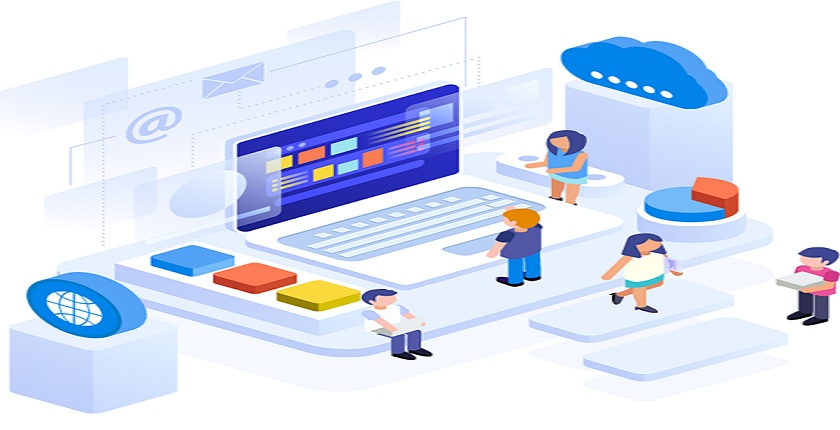In an era where the phrase “There’s an app for everything” holds more truth than ever, the mobile app market is booming. With millions of apps available across platforms like Google Play Store and Apple App Store, and the market revenue projected to reach around $613 billion by 2025, the demand for mobile app development is skyrocketing. But a burning question for many businesses is: How much does it cost to develop an app?
This guide aims to provide a detailed insight into the costs associated with mobile app development. Covering various factors that impact the cost, app monetization models, development processes and strategies to minimize costs.
Understanding the Average Cost of Mobile App Development
The cost to develop a mobile app can vary significantly, generally ranging from $25,000 to $150,000, and can exceed $300,000 for more complex, customized apps. This variance primarily depends on factors like the app’s complexity, features, and development approach.
Hidden Factors Affecting Mobile App Development Costs
Quality Assurance
Quality assurance (QA) is not just about finding bugs; it’s a comprehensive process that ensures your app aligns with the business objectives and user needs. Including QA professionals such as project managers or business analysts from the early stages can streamline the development process, reducing the likelihood of expensive redesigns or major fixes later. They can also help in aligning the development with user expectations and regulatory requirements, adding to the overall value of the app.
Infrastructure Costs
Infrastructure costs can vary greatly depending on the app’s requirements. For instance, high-traffic apps may require more robust server support or specialized services like cloud-based storage solutions and content delivery networks (CDNs). These services not only support the efficient functioning of the app but also enhance the user experience by ensuring fast and reliable access to app features and data.
IT Support Costs
Post-launch, IT support plays a vital role in the app’s lifecycle. This includes regular updates to keep the app compatible with the latest OS versions, bug fixing to address any issues users face, and API maintenance to ensure smooth integration with other services and platforms. This ongoing support is crucial for the app’s long-term success and user satisfaction.
App Publishing Costs
While the initial fees for publishing an app on platforms like Google Play and Apple’s App Store may seem nominal, there are other indirect costs associated with meeting these platforms’ standards, such as adherence to specific design guidelines, privacy policies, and more. Additionally, these platforms regularly update their requirements, necessitating occasional adjustments to your app to maintain compliance.
App Security
Investing in robust security measures is non-negotiable, especially in an era where data breaches are common. This not only involves encryption and secure data storage but also regular security audits and updates to address new vulnerabilities. Moreover, compliance with data protection regulations like GDPR can add to the development costs but is essential for user trust and legal compliance.
App Maintenance
Regular app maintenance is crucial for keeping the app relevant and functional. This includes routine bug fixes, UI/UX updates to match current trends, and adapting the app to new devices and OS versions. Maintenance ensures the app remains competitive and continues to meet user needs effectively. It’s important to factor in these ongoing costs right from the planning stage.
Code Reuse
While reusing code can significantly reduce costs and development time, it’s important to customize the reused components enough to give your app a unique identity and feel. It’s also crucial to ensure that the reused code is scalable, maintainable, and secure, aligning with the overall architecture and design of your new app.
Development Team
The choice of the development team is pivotal. A professional app development company might charge more but can bring expertise, speed, and quality assurance to the project. On the other hand, a local team or freelancers might offer cost savings but can come with risks like less predictable quality and potential communication challenges. The decision should align with your project’s complexity, budget and timelines.
Examples Of Global Apps and Their Development Costs
Uber
The cost of developing a ride-sharing app like Uber, ranging from $30,000 to $100,000, encompasses various factors. This includes the development of separate interfaces for passengers and drivers, integration of GPS and location services, payment system integration, and a robust backend to handle real-time requests and data processing. The higher end of the cost spectrum often involves advanced features like ride scheduling, fare estimation, driver and passenger rating systems, and in-app chat services.
The development cost for a messaging app like WhatsApp, ranging from $30,000 to $70,000, includes expenses for creating a simple yet effective UI/UX, end-to-end encryption for secure messaging, cloud backup for messages, media sharing capabilities, and voice and video call functionalities. The integration of various APIs for additional functionalities like location sharing or third-party app integrations can also influence the final cost.
TikTok
Developing a short-form video content app like TikTok can cost between $60,000 to $150,000, depending on the features and complexity. Key expenses include the creation of a sophisticated video editing tool, algorithm-driven content delivery. Also, user profile management, social sharing features and a backend capable of handling large volumes of data and traffic. The higher costs often involve implementing advanced algorithms for personalized content suggestions and enhanced video effects.
Coursera
An e-learning platform like Coursera, with development costs between $60,000 to $120,000, requires a comprehensive development approach. Additionally, costs may increase with features like interactive quizzes, certifications, and social learning functionalities.
Netflix
The cost to develop a streaming app like Netflix ranges from $25,000 to $200,00. This includes expenses for a sleek and responsive UI/UX design, content management systems, secure video streaming services. Also, user profile customization, recommendation algorithms and integration with various payment gateways. The higher end of the price range typically includes costs for advanced features like multi-language support, high-definition video streaming and scalable architecture to support a growing user base.
How to Reduce Your Mobile App Development Costs?
Prioritize Features
When aiming to reduce costs, it’s crucial to focus on developing a Minimum Viable Product (MVP). An MVP includes only the core features that are necessary for the app to function and fulfill its primary purpose. This approach allows you to launch your product quicker and with less initial investment. Once the app gains traction, you can gradually roll out additional features based on user feedback and financial resources. This not only spreads out the cost over time but also ensures that you’re investing in features that users actually want.
Involve QA Early
Involving Quality Assurance (QA) in the early stages of app development is vital for identifying and addressing potential bugs and errors. Early detection of issues can significantly reduce the cost and time spent on fixing problems later in the development process. Regularly scheduled QA checks can prevent the accumulation of errors. Which becomes more expensive and time-consuming to fix as the project progresses. This proactive approach also helps in maintaining the project timeline and budget.
Plan for the Future
Effective planning for both the short-term and long-term goals of your app can lead to significant cost savings. Consider how your app might need to evolve over time to meet changing market demands or user preferences. By building a scalable and adaptable app architecture from the start, you avoid costly reworks and updates in the future. This foresight in development can also include preparing for potential integrations or expansions that might become necessary as the app grows.
Consider Cross-Platform Development
Developing cross-platform apps is a strategic way to reduce costs while reaching a wider audience. Tools like Flutter, React Native, or Xamarin allow developers to write code once and deploy it on both iOS and Android platforms. This approach significantly cuts down development time and resources as compared to building separate native apps for each platform. Additionally, it simplifies the maintenance and updating processes, as changes need to be made only once to reflect across all platforms.
Conclusion
The cost of developing a mobile app in 2024 hinges on various factors, from the complexity of the app to the choice of the development team. By understanding these factors and applying strategies like prioritizing features, involving QA early, and considering cross-platform development, businesses can significantly reduce their development costs. Whether you’re a small startup or a large enterprise, these insights will help you navigate the complexities of app development and budget effectively for your project.





Leave a Reply